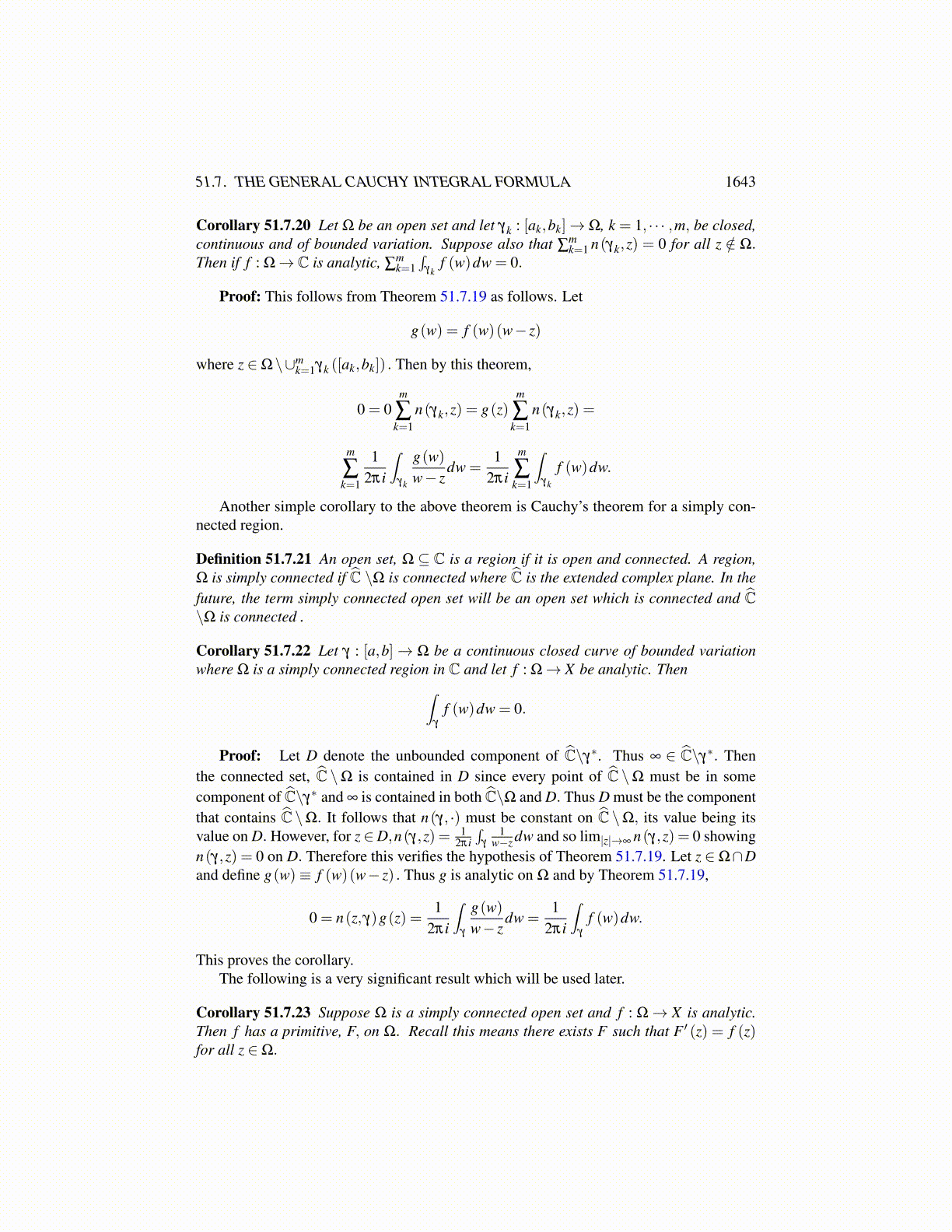
51.7. THE GENERAL CAUCHY INTEGRAL FORMULA 1643
=1h
(1h
(f ′ (z)h+
12!
f ′′ (z)h2 +13!
f ′′′ (z)h3 + · · ·)− f ′ (z)
)=
1h
((f ′ (z)+
12!
f ′′ (z)h+13!
f ′′′ (z)h2 + · · ·)− f ′ (z)
)=
12!
f ′′ (z)+13!
f ′′′ (z)h+ higher order terms
Thus the limit of the difference quotient exists and is 12! f ′′ (z).
Define
h(z)≡ 12πi
m
∑k=1
∫γk
φ (z,w)dw.
Is h analytic on Ω? To show this is the case, verify∫∂T
h(z)dz = 0
for every triangle, T, contained in Ω and apply Corollary 51.7.3. This is an application ofthe Fubini theorem of Theorem 50.0.15. By Theorem 50.0.15,
∫∂T
∫γk
φ (z,w)dwdz =∫
γk
=0︷ ︸︸ ︷∫∂T
φ (z,w)dzdw = 0
because φ is analytic. By Corollary 51.7.3, h is analytic on Ω as claimed.Now let H denote the set,
H ≡
{z ∈ C\∪m
k=1 γ∗k :
m
∑k=1
n(γk,z) = 0
}
=
{z ∈ C\∪m
k=1 γ∗k :
m
∑k=1
n(γk,z) ∈ (−1/2,1/2)
}the second equality holding because it is given that the sum of these is integer valued. ThusH is an open set because z→∑
mk=1 n(γk,z) is continuous. This is obvious from the formula
for n(γk,z). Also, Ω∪H = C because by assumption, ΩC ⊆ H. Extend h(z) to all of C asfollows:
g(z)≡
{h(z)≡ 1
2πi ∑mk=1
∫γk
φ (z,w)dw if z ∈Ω
12πi ∑
mk=1
∫γk
f (w)w−z dw if z ∈ H
. (51.7.27)
Why is g(z) well defined? Then on Ω∩H, z /∈ ∪mk=1γ∗k and so
g(z) =1
2πi
m
∑k=1
∫γk
φ (z,w)dw =1
2πi
m
∑k=1
∫γk
f (w)− f (z)w− z
dw
=1
2πi
m
∑k=1
∫γk
f (w)w− z
dw− 12πi
m
∑k=1
∫γk
f (z)w− z
dw
=1
2πi
m
∑k=1
∫γk
f (w)w− z
dw